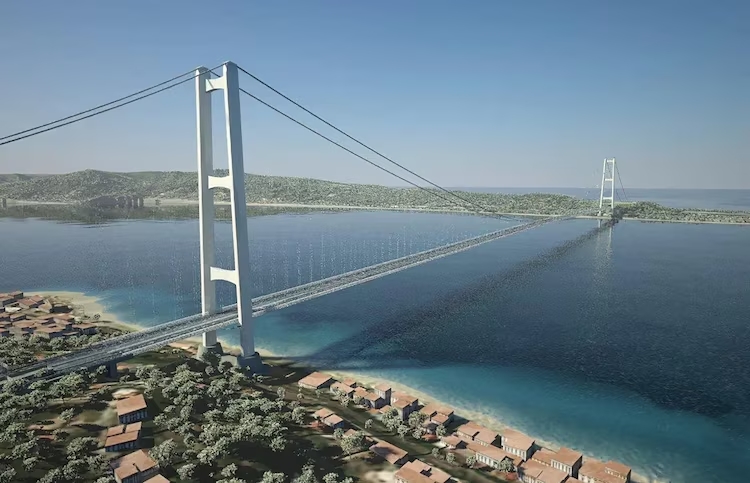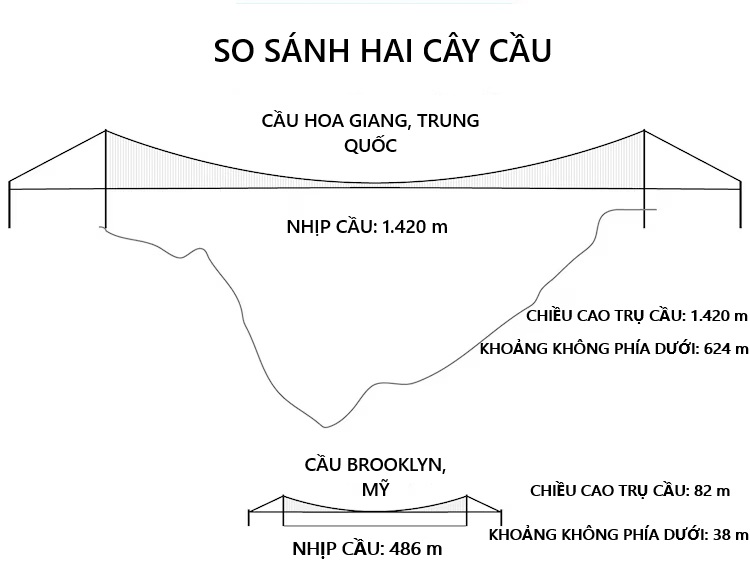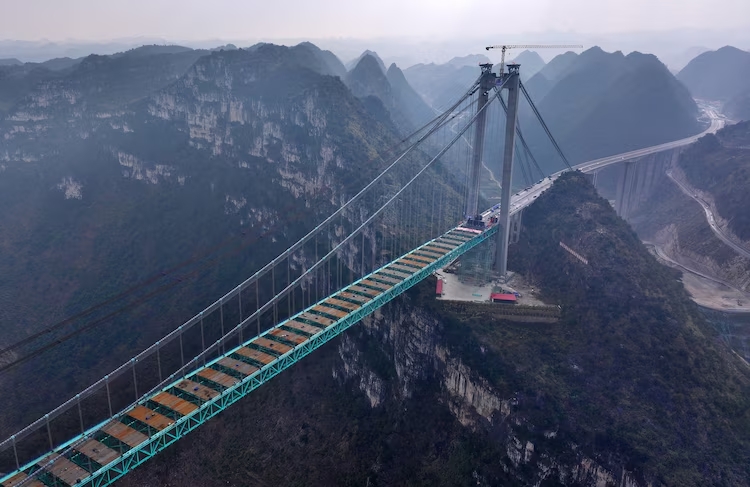On 6/8, the Italian government approved a USD 15.6 billion project to build the world's longest suspension bridge, connecting the island of Sicily to the mainland. The bridge will feature two railway lines in the center and three vehicle lanes on each side. The 3.3 km main span, suspended between two 400-meter-high towers, is expected to be completed in 2032.
"This will be the longest single-span bridge in the world, acting as a driver of development for the less-developed areas at both ends, namely Sicily and Calabria in the south," said Italian Deputy Prime Minister and Minister of Transport and Infrastructure Matteo Salvini.
The Italian government stated the bridge will be a state-of-the-art engineering feat, capable of withstanding strong winds and earthquakes, as it is being built in a tectonically active zone.
 |
A graphic rendering of the bridge connecting Sicily to mainland Italy. Image: WeBuild |
A graphic rendering of the bridge connecting Sicily to mainland Italy. Image: WeBuild
Upon completion, this bridge will surpass the current record held by Turkey's Canakkale Bridge by over 800 meters.
"Today, Italy demonstrates once again that it can carry out large, transformative projects together for the entire country," said Pietro Salini, chief executive of infrastructure group WeBuild.
Meanwhile, China is also pushing bridge-building technology to new heights with the construction of the Huajiang Canyon Bridge in Guizhou province.
Last week, the final steel girder of the bridge was installed, marking a significant milestone in the project. According to People Daily, the Huajiang Bridge is over 98% complete and is scheduled to open at the end of September.
According to China Central Television, the bridge will reach a height of 625 meters from deck to the Beipan River, nearly twice the height of the Eiffel Tower, and will be the world's highest bridge.
Compared to the iconic Brooklyn Bridge in New York City, the Huajiang Bridge is seven times taller and is considered a testament to the unprecedented scale of modern bridge engineering.
 |
A comparison of the Huajiang Bridge in China and the Brooklyn Bridge in the US. Graphic: ABC News |
A comparison of the Huajiang Bridge in China and the Brooklyn Bridge in the US. Graphic: ABC News
Both structures serve critical functions. Italy’s suspension bridge is designed to handle 6,000 vehicles per hour and 200 trains per day, boosting connectivity for Sicily. The Huajiang Bridge will be a key connection point for a major Chinese highway and is expected to become the world's highest bungee jumping spot, attracting tourists.
Both projects have faced unique engineering challenges. The Italian bridge must contend with the seismic risks of the Messina fault line, while China's Huajiang Bridge has addressed the demanding technical requirements of spanning one of the world's deepest canyons.
These two projects reflect a global trend of pushing infrastructure to its limits. While Italy aims to strengthen a vital connection to Sicily, China has been systematically building the world's highest bridges.
 |
The Huajiang Canyon Bridge in Guizhou province, China, in January. Image: VCG |
The Huajiang Canyon Bridge in Guizhou province, China, in January. Image: VCG
According to HighestBridges, of the 50 super-tall bridges in the world (those over 300 meters high), China has built 47. Guizhou province aims to construct over 1,000 bridges over 100 meters high by 2030, more than any other country.
Huyen Le (ABC News, AFP)












